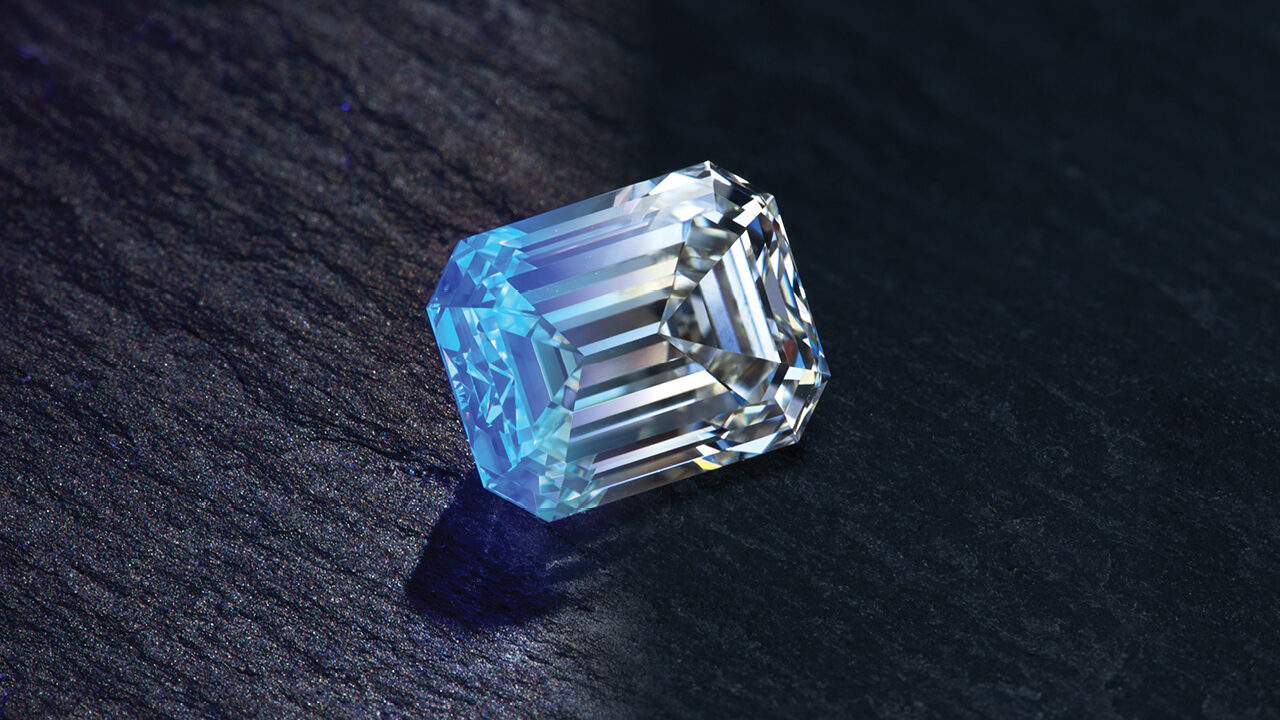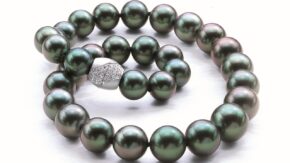Fluorescence is the most misunderstood phenomenon in the diamond industry. So let us try to clarify things for you.
Fluorescence is the visible light some gemstones emit when they are exposed to invisible ultraviolet rays from sources such as the sun and fluorescent lamps. Blue is the most common color of fluorescence, but other colors may be visible. Once the light source containing the UV is no longer available the diamond will return to normal and cease to fluoresce.
It is important to note that fluorescence is not considered a grade, such as the 4Cs (color, clarity, cut and carat weight), but is considered as an identifying characteristic on diamond grading certificates.
To assess fluorescence, the GIA examines the diamond from a side view with the table down. The American Gem Society (AGS) does so as a diamond would appear in jewelry, with the table up. De Beers examines its stones with the table facing down, like the GIA does, believing this offers the most accurate results.
TERMINOLOGY
The AGS and De Beers also use different terminology than the GIA in their fluorescence ratings, starting their scales with “negligible” rather than the GIA’s seemingly straightforward “none.”
Firstly, it is important to understand that all diamonds have some fluorescence. In the end, it simply comes down to how much. The GIA uses the term “none’ to describe diamonds which exhibit no sign of fluorescence to those that exhibit a hint of fluorescence. This “hint” is so weak as not to be considered “faint”. The AGS, on the other hand, prefers to use the term “negligible” to identify what the GIA terms as “none”.

As all diamonds have some fluorescence some believe the AGS terminology to be more accurate. All agree on the rest of the scale used to denote levels of intensity of fluorescence – Faint, Medium,
Strong and Very Strong.
The term “faint” describes diamonds where the level of fluorescence is so slight it is highly difficult to distinguish it under a controlled UV light source. If the color of fluorescence is blue, the rating will not indicate the color of the
fluorescence.
However, if the color is other than blue (yellow, green, white, etc.), the rating will include the word faint and the color of the fluorescence.
PRICE IMPACT
The impact of fluorescence on price depends on its noticeability. In some cases, it gives the stone a milky white appearance, which greatly lowers value. In some instances, the fluorescence is hardly noticeable and has minimal impact on the stone’s brilliance.
Blue fluorescence gives lower-color stones a whiter, brighter face-up appearance. Yellow or white fluorescence is problematic and may require an additional 5% to 10%
discount.
Generally, the higher the quality and price per carat, the more fluorescence lowers value.
Image: Alrosa




